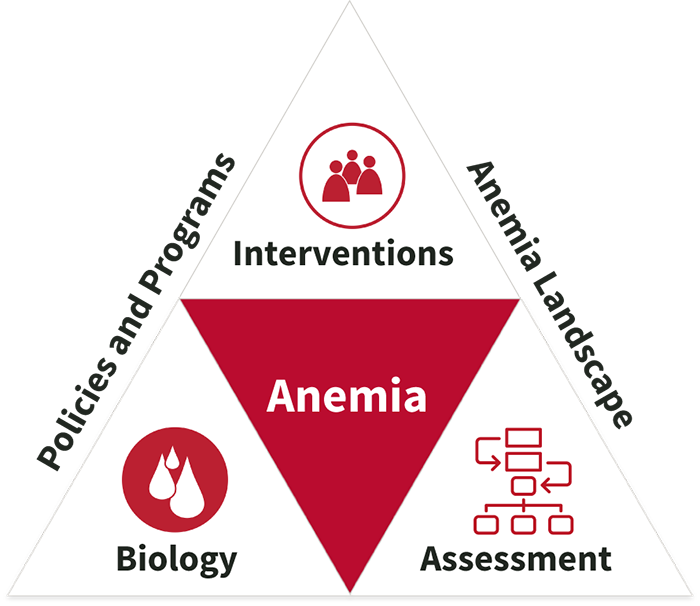It is important to recognize the relationships among nutritional and non-nutritional causes of anemia; each may affect and be affected by the other. For example, an individual may have acute inflammation due to an illness, and the elevated hepcidin caused by the inflammation could lead to functional iron deficiency. Inflammation would also interfere with iron absorption, so supplementation/fortification would be most effective after resolution of the inflammation.
In 2010, four of the five most common causes of anemia were non-nutritional: hookworm disease, sickle cell disorders, thalassemias, and malaria. Public health practitioners increasingly recognize that the proportion of anemia attributable to iron deficiency within populations may not be as large as previously assumed. Nevertheless, the Global Burden of Disease identified iron deficiency as the leading cause of anemia. Therefore, the toolkit emphasizes assessment of inherited blood disorders, infections, and iron status to understand the ecology of anemia. Figure 1 provides a framework for assessing etiologies of anemia in populations and highlights several core concepts.
Figure 1. Decision Tree to Inform What Information on the Underlying Causes of Anemia to Consider Including in Population-Based Surveys

We found 43 resource(s)
Pagination
- First page
- Previous page
- 1
- 2
- 3
- 4
- 5
- 6



